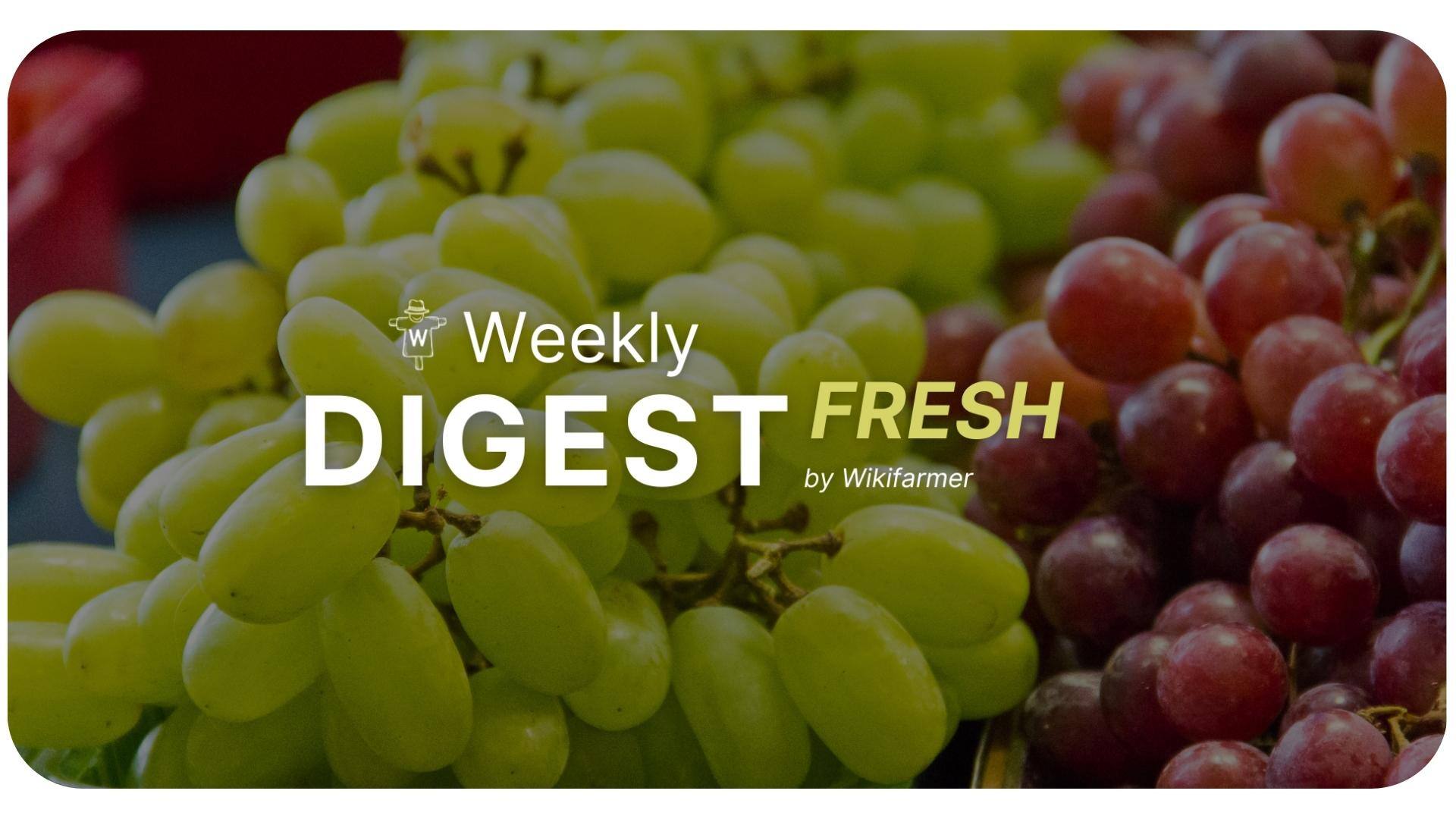Grapes Market Digest w31

Weekly updates on the grapes market
Price movements in the EU
European table grapes are in full swing, with Italian products dominating the market. According to our experts, there is a growing demand for seedless grapes across the European market. For further analysis of the grape sector, Wikifarmer Marketplace has provided valuable insights, along with price data from the German Federal Ministry of Food and Agriculture and the French Market News Network.
-png.png?width=767&height=301&name=CWEcH-mean-fruit-prices-in-german-wholesale-markets%20(1)-png.png)
In the wholesale markets of Central Europe, Italian unloadings predominated. In particular, Victoria and Black Magic dominated, with numerous other varieties complementing the Italian supply. Spanish offerings completed the market. There were also a few French, Greek, and Turkish batches. Business was relatively quiet. As interest was somewhat weak due to the vacations and sales were mostly insufficient, prices fell again. Only in Cologne did customers have to dig deeper into their pockets for dominant light and blue-skinned seedless offerings. Our field experts have also observed that the German market has a growing preference for grapes packaged in 500g clamshell containers.
-png.png?width=768&height=455&name=X5z5c-mean-prices-in-the-rungis-market-fr-%20(8)-png.png)
Italian table grapes are witnessing a significant rise in export value, indicating their growing importance in the global fruit market. In 2023, Italy exported 384,000 tons of table grapes, amounting to 821 million euros and securing a 9.6% share of the global market. This growth positions Italy as the third-largest exporter of table grapes worldwide, trailing only Peru and the Netherlands. The Puglia region, a major hub for grape production, contributes 24% of the national output and leads in export volume. The region's role was highlighted at the "Regina di Puglia" event, which also explored the potential of grape tourism as a new avenue to promote these products.
The export market for Italian table grapes is broad and varied, with significant demand from countries like Germany and France. While seedless grapes are increasingly favored in markets such as Germany and Scandinavia, traditional seeded varieties still have a strong presence in regions like France and Switzerland. The quality of Italian grapes is highly regarded, with an average market price of 2.14 euros/kg in 2023, reflecting their desirability and reduced availability. With continued efforts to diversify and target specific international markets, especially outside the European Union, Italian table grapes are poised for further growth and could soon become the country's leading fruit export by value.
The USDA has reported a drop in the European Union's table grape production, estimated at 1.3 million tons, down by 250 thousand tons due to adverse weather conditions in Italy. Consequently, exports are expected to decline to 125 thousand tons, a decrease of 46 thousand tons. Meanwhile, imports are projected to increase to 600 thousand tons, up by 27 thousand tons, fueled by strong shipments from South Africa. This change highlights the EU's growing dependence on external sources to satisfy domestic demand amid declining local production.
Revitalizing Moldova's Vineyards: A Sustainable Future for Table Grapes
A recent workshop launched a transformative project to boost the sustainability, resilience, and competitiveness of Moldova's table grape sector. The initiative, a collaboration between the Food and Agriculture Organization of the United Nations (FAO) and the Moldovan Ministry of Agriculture and Food Industry, brings together key stakeholders including producers, retailers, and international representatives. Key components include field interviews along the grape value chain, the establishment of five Farmer Field Schools, and the creation of a knowledge hub.
Under the FAO's "One Country One Priority Product" (OCOP) program, the project utilizes the Agrifood Systems Transformation Accelerator (ASTA) methodology. This innovative approach offers a comprehensive analysis of the table grape value chain, bridging agriculture and industry and considering economic, social, and environmental factors. It aims to identify investment opportunities, promote agro-processing, and ensure sustainable growth.
-jpg.jpeg?width=757&height=1594&name=Untitled%20design%20(28)-jpg.jpeg)
Moldovan Agriculture Minister Vladimir Bolea highlighted the sector's importance, noting Moldova's annual production of approximately 130,000 tonnes, with 60 percent exported. The project aims to overcome challenges like rising production costs and limited market access, fostering innovation and collaboration to contribute to Moldova's economic development.
.png?width=450&height=87&name=New%20Logo%20(1).png)